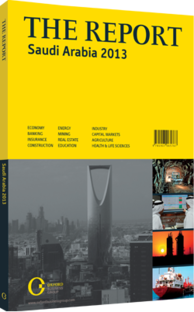Over the long haul: Unconventional energy sources given attention with recent technology
Traditionally viewed as a means to exploit technically challenging, marginal and maturing oil and gas reservoirs during periods when energy prices are high enough to offset greater production costs, the development of unconventional hydrocarbon sources has flourished around the world over the past decade from Southeast Asia to North America. With new technologies opening up vast new blocks of hydrocarbons resources for production, even oil-rich countries such as Saudi Arabia with their underground seas of crude are beginning to partake in the new technology.
Unconventional Extraction
Unconventional oil and gas supplies encompass a wide variety of technologies and methods of extraction that are still evolving at a rapid pace. These range from increasing the productivity and lifespan of production fields through the use of enhanced oil recovery (EOR) techniques to hydraulic fracturing (commonly known as “fracking”) to release previously inaccessible supplies, typically trapped in shale formations. Just as the world’s insatiable demand for energy has led to technological evolutions that brought on horizontal drilling and offshore deepwater platforms, these new techniques have opened up vast new areas for exploration and production, and extended the probable hydrocarbons reserves.
Gas
As evidenced by the sudden boom in natural gas production in the US over the past decade, the potential of unconventional gas can be enormous. In the case of Saudi Arabia, estimates for the country’s potential shale gas reserves range from between 12.66trn and 18.26trn standard cu metres (scm) – well above the proven conventional gas reserves of 8.16trn scm. To assess the potential of these resources, which include tight gas and shale gas, Saudi Aramco launched its upstream unconventional gas programme in 2011.
The chief explorationist of Saudi Aramco’s Unconventional Gas Exploration Division, Saleh M Saleh, told E&P magazine (a leading publication covering exploratory, drilling and production operations) in September 2012 that there were two main reasons for Saudi Arabia’s recent interest in unconventional gas: “Population growth is placing escalating demand on the utilities for power and water. The utilities need environmentally friendly gas. And unconventional gas development is manpower-intensive, so it generates thousands of jobs.”
Thus far, these exploratory efforts have focused on three primary areas. The first of these is located in shallow deposits in the north-western part of the country. The second area thought to contain tight gas sand lies within the Kingdom’s largest oilfield, Ghawar, which has the advantages of substantial geologic data from previous exploratory work and proximity to existing infrastructure. The third and final area is located in the south of the country in the desert of Rub Al Khali , which is thought to hold significant shale gas within its mostly Jurassic and Cretaceous rock formation.
EOR
Although Saudi Arabia is blessed with ample reserves that are easily accessible through conventional means, the government is looking into every possible avenue to make the most of its resources in the face of increased long-term demand. While in most cases this would mean more sophisticated technology, this is not always preferable in the Kingdom due to the abundance of sources that can be extracted cheaper using traditional methods. Still, some EOR projects have already been employed.
One such project that has been pressed into service is the utilisation of electrical submersible pumps at the Safaniya offshore field, which allows for improvement of crude gathering units. Multi-phase pumps have also been installed at the Haradh and Shaybah fields, which are able to revive dead or marginal wells to make them viable again. This is done by reducing backpressure on dead wells, leading to test wells recovering an additional 3000 barrels per day (bpd) in Haradh and 8000 bpd in Shaybah. Another option being explored is the use of carbon dioxide emissions sourced from heavy industrial factories or power plants in oil recovery. This is benefits the environment by diverting harmful emissions into partially drained reservoirs located underground.
You have reached the limit of premium articles you can view for free.
Choose from the options below to purchase print or digital editions of our Reports. You can also purchase a website subscription giving you unlimited access to all of our Reports online for 12 months.
If you have already purchased this Report or have a website subscription, please login to continue.

